
On the night of Sep 09/10, 2025, under good conditions, I acquired images of the recurrent nova T CrB. This star undergoes outbursts at long intervals of 80 years or so. Its next outburst is predicted to occur soon (but then again, it was also predicted to occur during 2024), and so I've joined the crowd who are monitoring it.
Good measurements tonight: clear, though the Moon was bright. The star remains quiescent.
I am going to have to replace the current computer running in the dome, which controls the camera and guider; it runs Windows 10, which is no longer supported. As described at the end of tonight's report, that led me to run some tests of the guide camera.
This recurrent nova brightens by about 8 magnitudes (!), from V = 10 to about V = 2, around every 80 years. Will we see another outburst THIS summer?
These observations involved:
Notes from the night:
The picture below shows a cropped image of the field of T CrB from Jun 14/15, 2024. The field of view is about 20 arcminutes across.

I've marked the location of several comparison stars, with magnitudes and names taken from the AAVSO's table X40237AAS. Note that the magnitudes listed for stars "A" and "B" have changed from the ones I listed in last year's notes.
star name B V
------------------------------------------------------
A 000-BJS-901 11.096 10.554
B 000-BBW-805 11.779 11.166
C 000-BPC-198 13.049 12.336
--------------------------------------------------------------------------
When the target is centered, the finder TV shows this field:
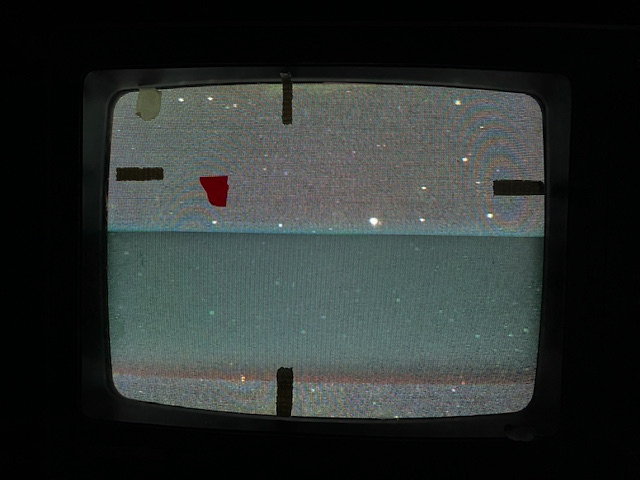
Here's the sky background over the course of the run. No clouds!
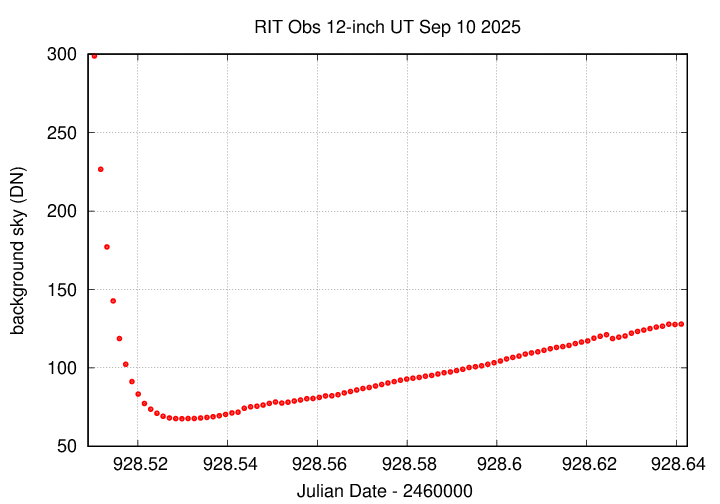
The FWHM rose a bit (probably due to increasing airmass).
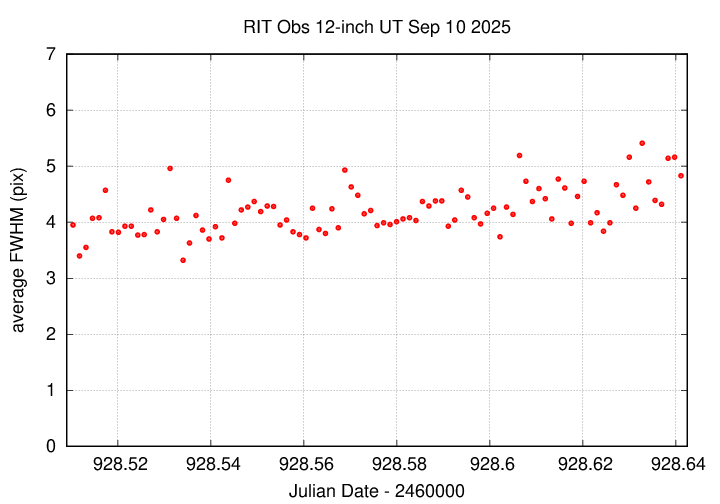
The graph below shows changes in the photometric zeropoint of an ensemble solution of the instrumental magnitudes over the course of the run. Very nice.
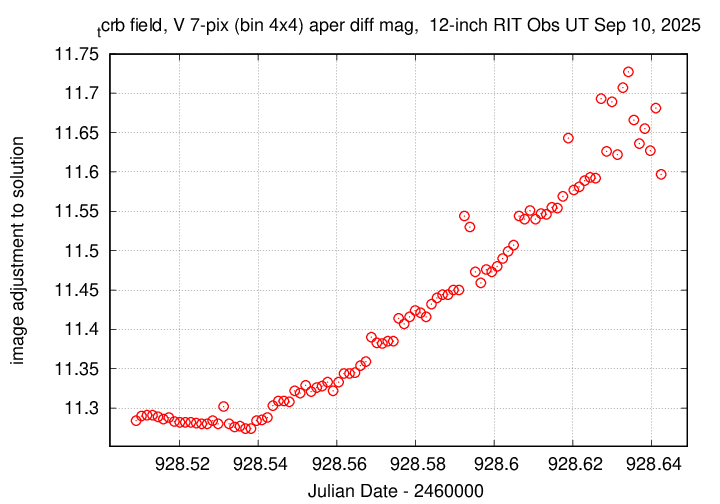
Using aperture photometry with a radius of 7 pixels in V filter (binned 4x4, each pixel is 1.036 arcsec, so a radius of 7.3 arcsec), and 7 pixels in B filter (binned 4x4, each pixel is 1.036 arcsec, so a radius of 7.3 arcsec), I measured the instrumental magnitudes of a number of reference stars and the target. Following the procedures outlined by Kent Honeycutt's article on inhomogeneous ensemble photometry, I used all stars available in each image to define a reference frame, and measured each star against this frame.
Sigma-vs-mag plots show that the floor in V-band was about 0.005 mag in V, which is good. it was 0.006 in B.

The measurements show that the target is still in quiescent phase; there was a bit of a rise-and-fall late.
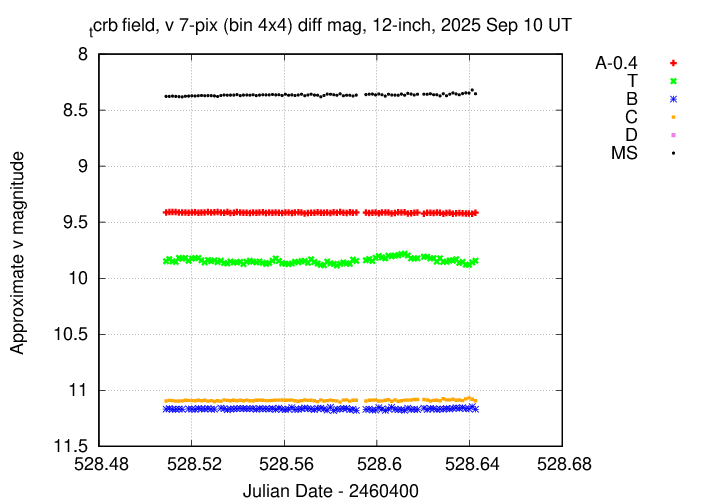

I've submitted these measurements to the AAVSO.
The current computer in the dome, which controls the camera and guiding, runs Windows 10. Since RIT is no longer allowing such machines to connect to the campus network, I will be replace this old computer with a newer one which can runs Windows 11 later this week.
Our current guide camera is an Orion StarShoot Autoguider Pro. I can't find a driver to support this camera under Windows 11 -- I've tried several times to connect it to the new machine, but the camera isn't recognized. So, I will have to switch guide cameras. I will try to use an older camera, the Orion StarShoot Autoguider (not Pro version). I have verified that the new computer can read it properly.
It's not clear to me how well the new guide camera will perform compared to the current one. There will undoubtedly be a period when I am fiddling with the parameters in MaximDL in order to get the guiding to work properly. So, at the end of this run, I tried to do a test of the current and new guide cameras on the same field.
I pointed the telescope to Albireo, which fell into the main camera's field of view at
XVista coords: (738.57, 1099.46) DS9 coords: (1100, 739)The image below shows North up, East left.
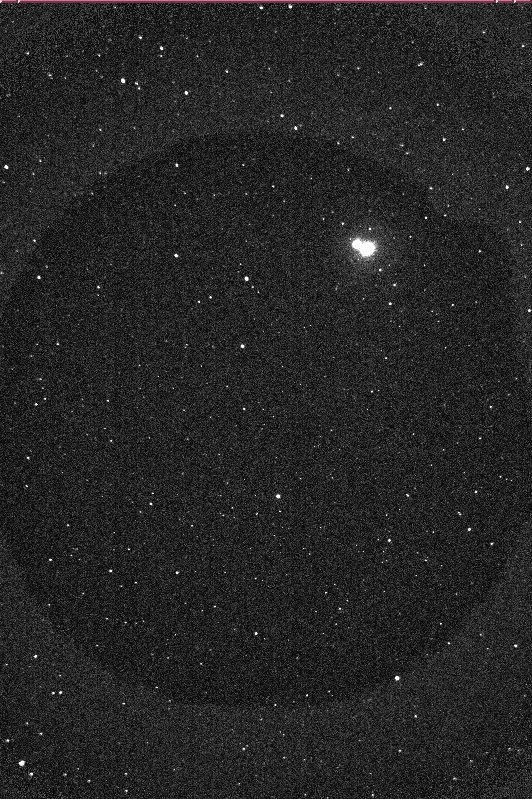
With the current guide camera, took several images of the offset guider's field. The one below has an exposure time of 3 seconds. There were some stars in it, not suprisingly, due to the high density of stars in the Milky Way. I believe that the field below has orientation North up, East to RIGHT (not left), and a size of about 4.1 arcmin East-West x 5.5 arcmin North-South.
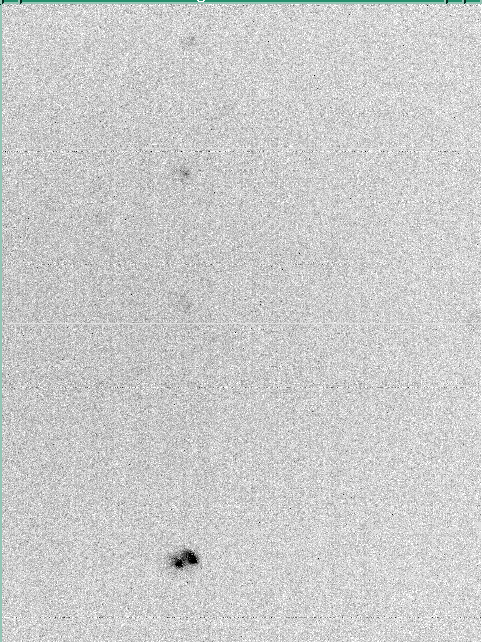
The offset guider's field of view is, from notes on UT May 31, 2024, about 21 arcminutes East of the main field. I can't identify these stars, unfortunately.
I then replaced the guide camera with the plain-old StarShoot camera and tried taking image of the same field ... but failed. The old Windows 10 machine doesn't have a proper driver for the StarShoot camera. Argh.
It's a good idea, so I'll try again when I replace the computer and _can_ read the new guide camera. I'll have to compare the images of guide field taken tonight with those taken with the new camera on that future night.